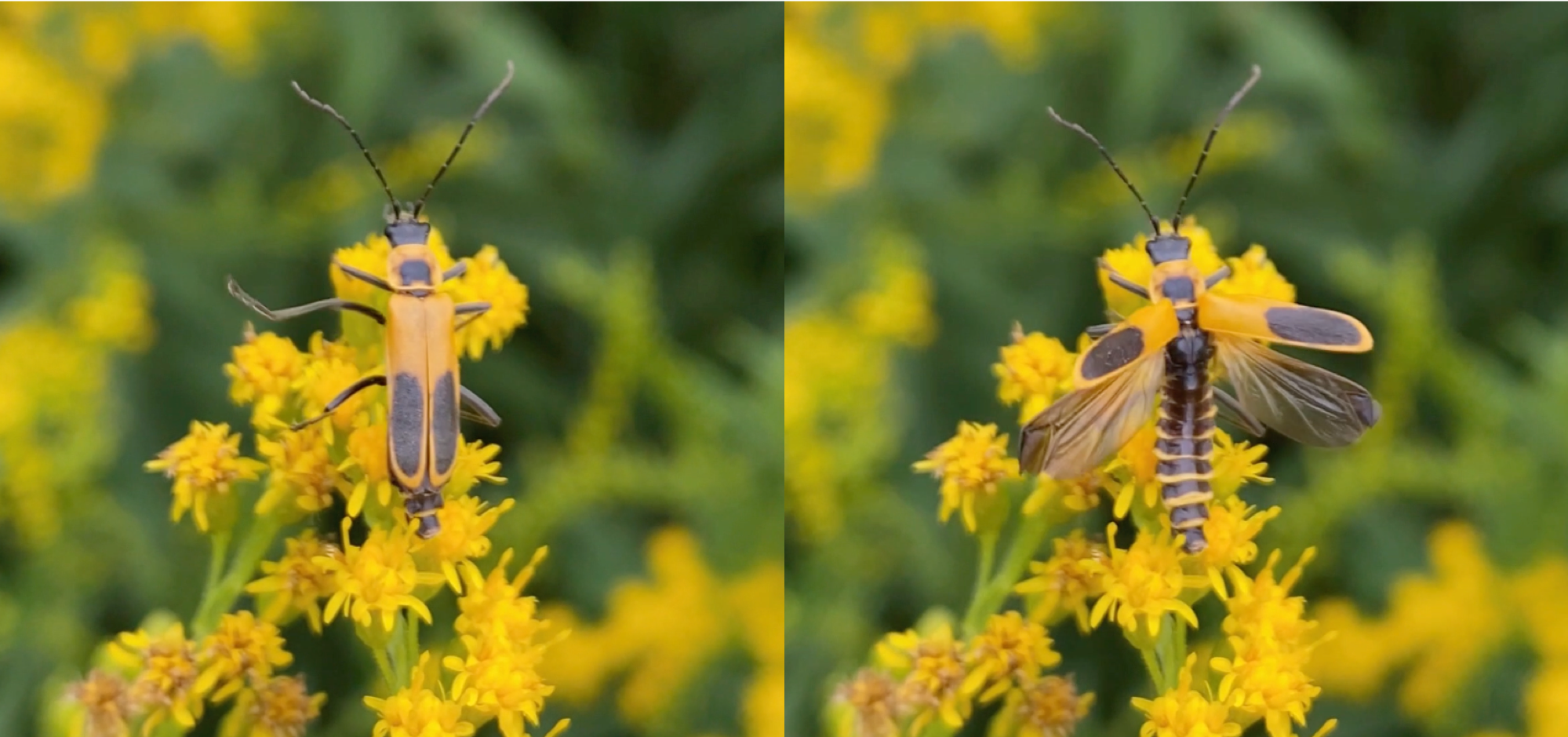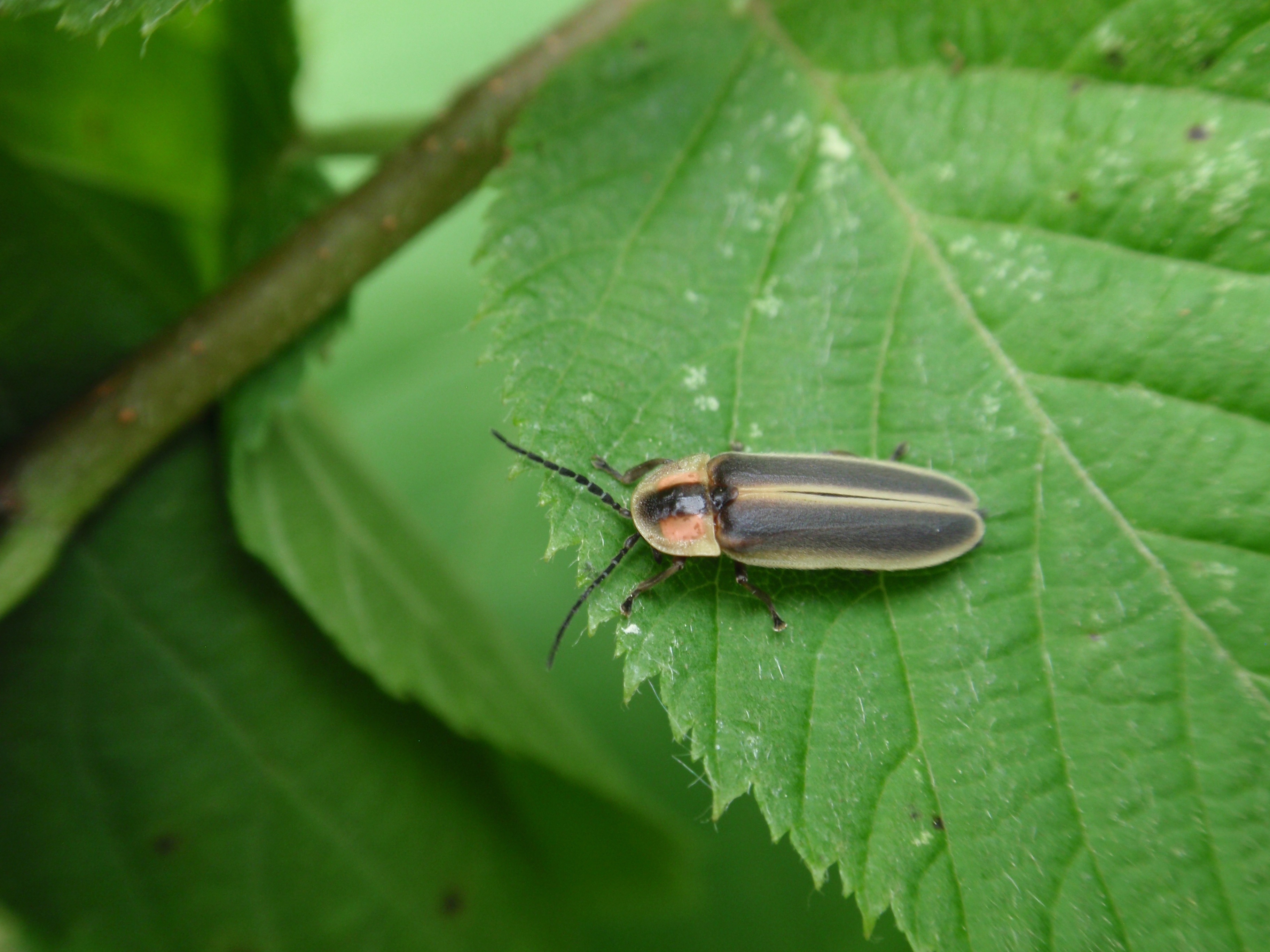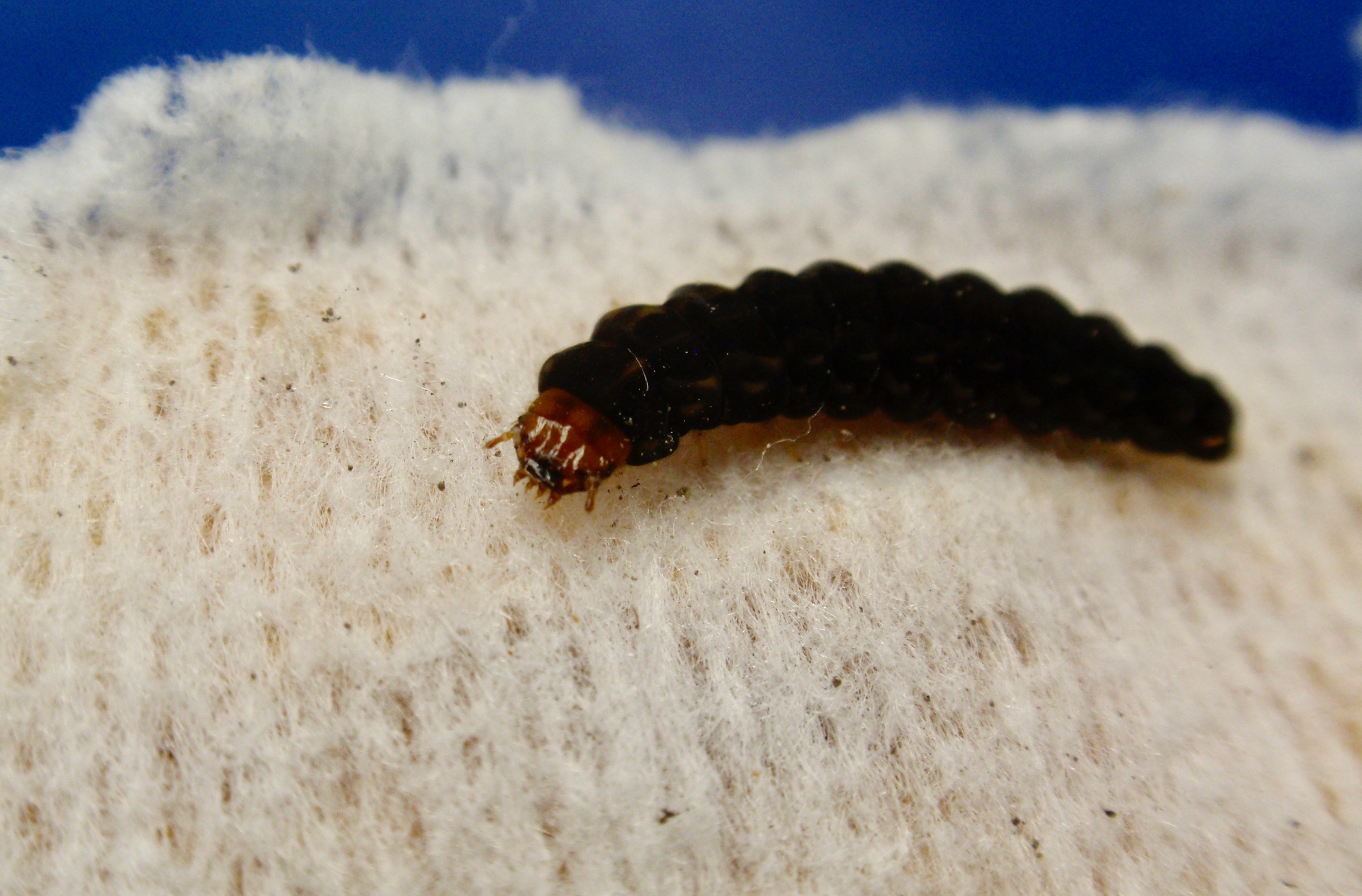Michigan insects in the garden - Season 2 Week 11: Cantharidae
Common flower-visiting beetles that are often mistaken for bees.

The beginning-of-the-end of summer in Michigan is signaled by several insect-related events. For example, cicada killer wasps start to show up in our yards, tree crickets begin filling the night air with their chirps, and soldier beetles arrive en masse on the blooms of goldenrod (Solidago spp.) to procreate. There are over 400 species of soldier beetles (Family Cantharidae) in North America. The most often encountered in Michigan is the Pennsylvania leatherwing, also known as goldenrod soldier beetle (Chauliognatha pennsylvanicus, Photo 1). This readily identifiable black and yellow insect is harmless in the garden and the predatory habits of all life stages make its yearly recurrence a welcome sight.
Members of the soldier beetle family come in a wide variety of sizes and colors, but most of them share a few common characteristics that can help you tell them apart from other insects. Of course, they belong to the order Coleoptera, which includes all of the true beetles. This means that they have two forewings hardened into a shield that protects their fragile hindwings (Photo 2). The scientific term for each of these shield-type wings is elytron (pl. elytra). In soldier beetles the elytra are soft and leathery, which sets them apart from many other beetles. They also have heads that clearly stick out in front of their bodies, which will help you distinguish them from their close relatives, the fireflies (Family Lampyridae, Photo 3).


Life in the trenches
Soldier beetles lay clusters of eggs in protected locations near the soil surface in the late summer or fall. Upon hatching from the eggs, predatory larvae will disperse along the soil surface in search of prey. Soldier beetle larvae (Photo 4) are nocturnal, and can be found under stones, in moss, under leaf litter, and in other moist sheltered locations near the soil surface. A comprehensive study of prey choices for cantharid larvae has not been performed, but there are observations scattered throughout the scientific literature. They have been seen eating grasshopper eggs, caterpillars and small arthropods near the soil surface. At least two studies, including one by Michigan State University researchers, have found them to prey upon codling moth larvae on the orchard floor. Hopefully, future research will help shed some light on the importance of soldier beetle larvae for pest management.

Once they are finished maturing, soldier beetle larvae pupate in a chamber they construct just below the soil surface. They emerge from the pupa in spring or summer (depending on the species) as a fully formed adult beetle and begin searching for food. Adult soldier beetles eat aphids, other soft-bodied insects, and insect eggs. Soldier beetles visit a variety of different flower species, not just goldenrods. Flowering plants provide them with insect prey (aphids, etc.), pollen and a place to find a mate. Due to their boisterous activity on the blooms of flowering plants, they do contribute to pollination, even if they aren’t specialized for the task as bees.
If you see them on your garden plants, be thankful that they are helping you with you pest control and pollination. You can encourage more soldier beetles by allowing native flowering plants to flourish in your landscape. Late-season plants like goldenrod are especially helpful because they provide abundant nutrition when it is most needed by the egg-producing females.
Visit the website for the Michigan Pollinator Initiative for more information on how to conserve beneficial insects in your yard and garden.
We hope that you have enjoyed our Insects in the Garden series from Michigan State University Extension and we would like to invite you to provide us with valuable feedback about the series and whether it should continue in future years by responding to this brief survey. Thank you for reading and we wish you a glorious summer and fall in the garden this year.



 Print
Print Email
Email





